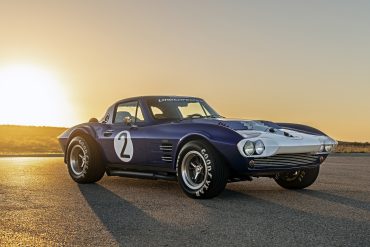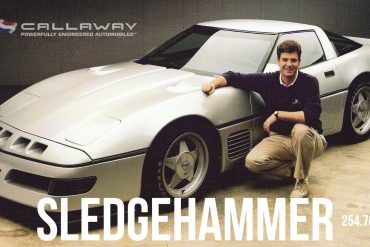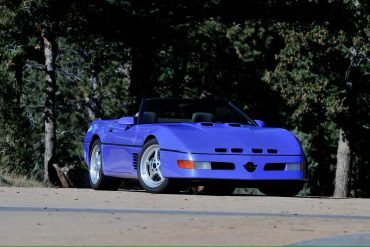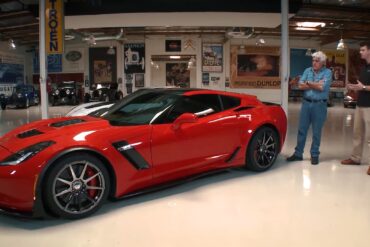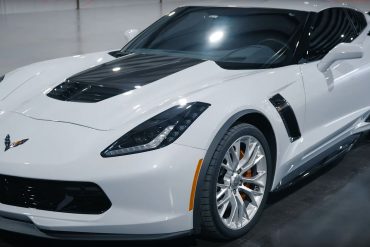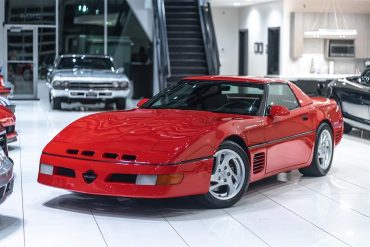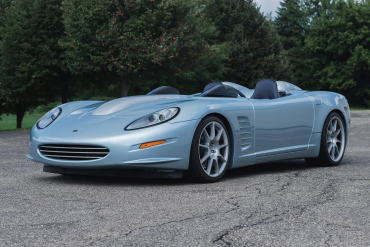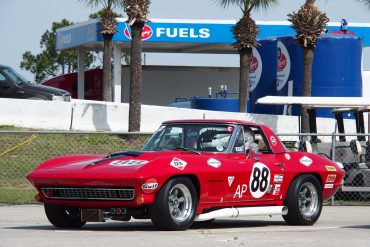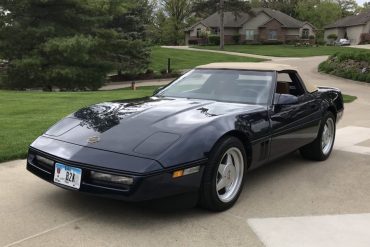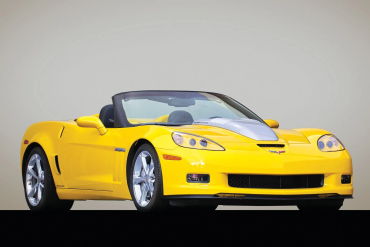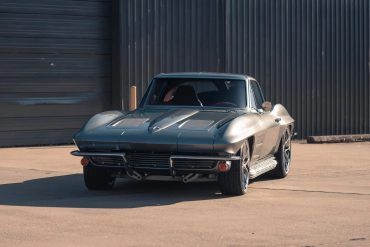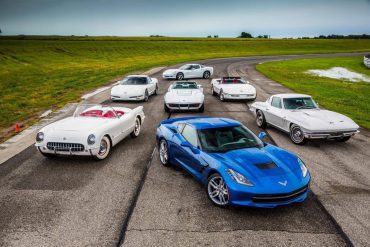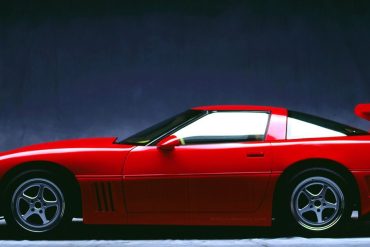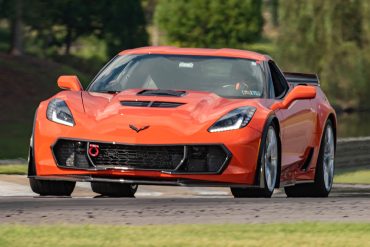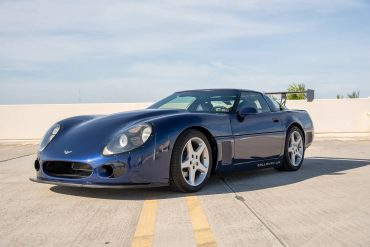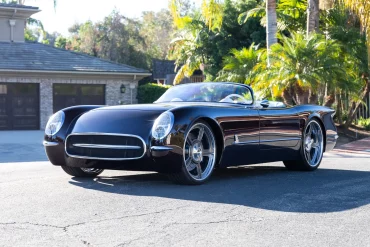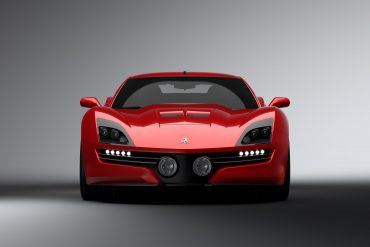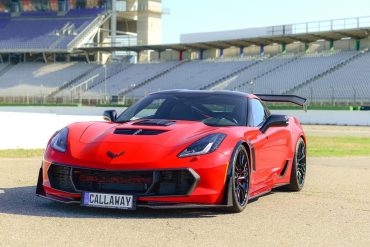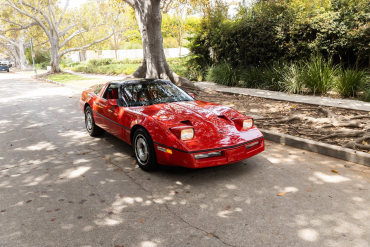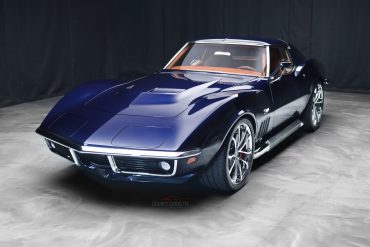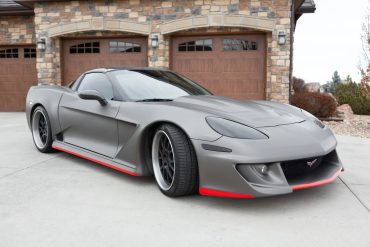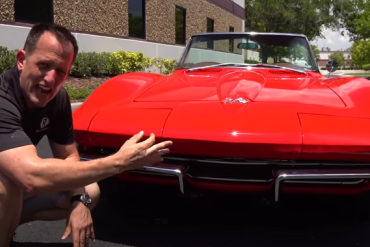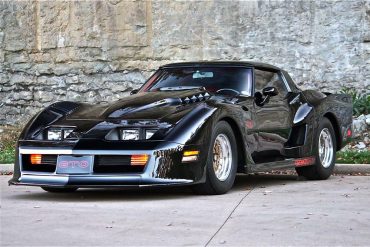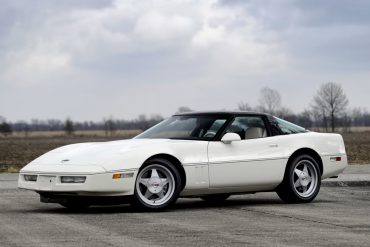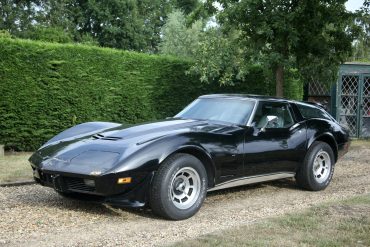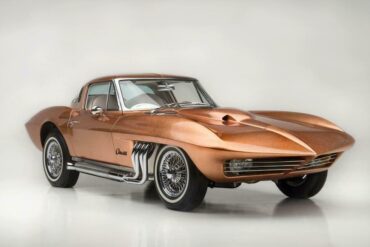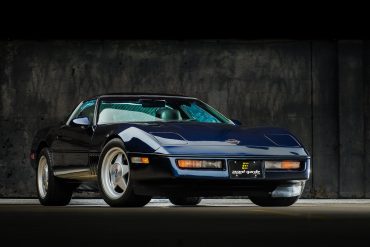The original Corvette Grand Sport has a compelling history. In the early 1960s, Zora Arkus-Duntov aimed to create a lightweight,...
It’s hard to believe that just months ago I was doing a feature on one of Reeves Callaway’s legendary builds,...
After its four-year tenure in the Corvette catalog as Regular Production Option B2K, Callaway Twin Turbo conversions ceased after the...
Jay Leno gives an in-depth look at the 2016 Callaway Corvette Aerowagen that has impressive 757 horsepower!...
Hennessey Performance is well known among Corvette enthusiasts. They have made some legendary performance upgrades, and are currently working on...
Chevrolet's introduction of the LT1 in 1992 as the base engine in the Corvette phased out the L98 based Callaway Twin Turbo. Previously, Callaway Corvettes made their increased power through positive manifold pressure; now they made it through increased displacement and finesse. Initially called the CL1 or CR1, they designated the chassis they were built upon. They were based on the pushrod LT1 cars (CL1) or the 32 valve DOHC LT5 ZR-1 cars (CR1).
The 25th Anniversary Edition is a hardened up version of Callaway's Corvette SC757, which in turn is based on a C7-generation Corvette Z06. It features a supercharged V8 that pumps out 757-horsepower and 777 pound-feet of torque. The supercharger is a GenThree Callaway unit with the company's TripleCooled intercooler system. A high-flow intake system feeds that beast. Callaway's Level Two HD Cooling System also helps it avoid the overheating issues that plagued C7 Z06s.
In August 19, 2007, Callaway Cars unveiled the C16 Speedster, the third and flagship model in the C16 lineup, on...
A Florida Odyssey The L88 was the pinnacle of C2 Corvette racing in 1967. If you start with a big...
FOR SALE: A 1988 Callaway Twin-Turbo Corvette Convertible We are pleased to present this 1988 Corvette Convertible. Our friends at...
This particular Corvette started out as a 2010 Grand Sport and was turned over to Callaway so that it can...
This 1963 Chevrolet Corvette Resto Mod currently up for auction on Bring A Trailer is a remarkable demonstration of design,...
When the C7 Corvette debuted prior to the 2014 model year, it was quite clear that the newest iteration of...
Reeves Callaway has always had a dream of competing a Corvette of his own at the 24 Hours of Le Mans, France. The idea begin with the body work for a street version, but one thing led to another, and a full race version was completed as well. The street version is almost identical to the race version because the hood, tail, rocker panels, and lower door halves, are all made of carbon fiber, just like the race version.
For the 2014 model year, the Chevrolet team sculpted the seventh-generation Corvette into the most sophisticated, most feature-packed Corvette produced to date. Facing a daunting challenge, new technology enabled Callaway engineers to produce breathtaking power with seamless transition into and out of positive manifold pressure. Entirely new, Callaway’s patented GenThree supercharger design improved airflow quality and increased charge air cooling capacity.
You may recognize the name, as Caravaggio has been in the coachbuilding business since 1986 and enhancing Corvettes for generations....
Callaway and Corvette were tied together, and something had to follow up the monster B2K cars. So, in light of Callaway’s...
If the name sounds familiar, you may have run across Dave Kindig on the reality TV show Bitchin’ Rides, where...
An Homage to the American Sports Car If you’ve never heard of the U.S.-based firm Equus, you are probably not...
Callaway has been building special edition Chevrolet Corvettes and racing in GT class motorsport for what feels like ages; 25...
New for 1987 was an aftermarket option that was offered to consumers when ordering their Corvettes from the factory. Although...
Welcome to a new series where I showcase cool Corvette Restomods from around the net. In the relatively short time...
The 2023 Chevrolet Corvette Z06 is among the best American performance cars you can buy today. The C8 Z06 is...
This 2008 C6 Chevrolet Corvette has been extensively modified by Specter Werkes/Sports of Troy, Michigan to achieve greater power and...
I’m on social media daily, for what seems like all day, perusing Corvette content in all the corners to find...
The major differences between the 1980 and 1982 Daytona and the 1981 GTO are the hood, the tops of the rear fenders, and the rear spoiler/bumper cover. The Daytona had an elaborate, short vertical fin on top of the rear fender that turned several turns “in and back,” flowing to the wide, long, table-like rear spoiler. The GTO’s rear fenders pontoons are the same as.
In 1988, only 2,050 of the 22,789 Corvettes produced got the exclusive Z01 35th Anniversary Edition package, with just seven...
Greenwood didn’t just build Corvettes for the track, constructing a variety of different street car kits over the years. The story goes that the original ’wagon concept was commisioned by a drummer who wanted a Vette with enough cargo space to haul his drums to various gigs. Since the demise of the Corvette trunk, easily accessible cargo areas were definitely on the wish list for many enthusiasts. Chuck Miller designed and built this first Shark-era Sportwagon.
The "Asteroid" started life as a 1963 Chevy Corvette. It was ordered by mechanical engineer and renowned mid-century speed boat racer Bob Nordskog, sans any exterior paint save for a primer coat. Instead, the car was shipped directed to Barris Kustoms with instructions for Barris to transform the brand-new Corvette into a more radical version of itself.
This is the Callaway Vette You Need Callaway is known for making some of the craziest Corvettes out there. If...


